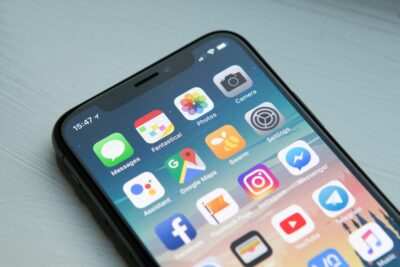These mobile apps can help people living with deafblindness to experience the world in a more accessible way.
Brailliac: Braille Tutor
Brailliac: Braille Tutor is an educational app designed to help users learn and practice Braille. It offers interactive lessons, quizzes, and customizable exercises for both beginners and advanced learners. The app supports multiple Braille codes, including Unified English Braille (UEB), making it a useful tool for visually impaired individuals and educators alike. Available on Google Play and Apple Store.
Samsung Good Vibes
Samsung’s Good Vibes app enables communication for individuals with visual and hearing impairments. It converts text and voice messages into Morse code vibrations, allowing users to send and receive messages through tactile feedback. This facilitates seamless interaction, enhancing connectivity and inclusivity for those with dual sensory challenges.
Cash Reader
Cash Reader Aid app reads money value out loud and supports over 100 currency denominations across multiple languages.
Supersense
Supersense is free and uses the camera to look around and find a particular object you are searching. The best part – you don’t need an internet connection to use it!
Taptapsee
Taptapsee is free and allows the visually impaired and blind community to accurately identify objects they encounter in their daily lives without the need for sighted assistance.
Lookout
Lookout is a Google app that uses your phone camera to aid people with visual impairments with daily tasks, such as reading documents, shopping, or household chores. Available in many languages.
Here are a list of more apps that empower people with deafblindness with added accessibility features:
Android and Google Pixel
Android Accessibility suite: A collection of accessibility apps including Talkback (Android screen reader)
Be My Eyes: Designed to support people who are blind or visually impaired by providing real-time visual assistance
Live Transcribe: Supports people who are deaf or hearing impaired by providing real-time text transcriptions and sound alerts on Android devices in over 120 languages.
Look to Speak: Empowers users to communicate using only their eye movements.
Voice Access: Supports hands-free control over Android devices using only voice commands.
Reading mode: Helps to improve screen reading experience with a focus on customisable features such as text, contrast, font types, page clutter etc
Sound amplifier: Cut out distracting background noises using headphones
IOS (Apple)
Voice Dream: Lets you listen to PDFs, textbooks, Web pages, emails, and books using advanced AI Text To Speech.
Keeble: Accessible keyboard
Big Keys Keyboard: A unique keyboard made for you to easily see all the keys
Oko – Cross streets and Maps: Helps you navigate and explore your environment with confidence
Seeing AI: Helps to narrate the world around you
Blind Square: Helps you to travel with confidence
Find other mobile apps available in:
Accessibility statement
In some places on our website, we signpost to third party websites and applications that provide useful information and advice to our users. We cannot guarantee that that these third-party websites and applications are fully accessible and comply with the WCAG 2.2.
Where possible we strive to work with these third parties to make the changes needed to conform to the WCAG 2.2 and improve their accessibility. Read our full accessibility statement.
